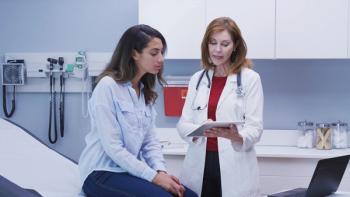
Patient Voices: What Matters Most
How are we actively listening to patients along the way so we know what matters most to them at each step of their cancer journey?
It’s no secret that I’m a bit of a healthcare social media evangelist. As clinicians, I think it’s essential that we develop digital competency, embrace social tools and participate in conversations online.
Why? Because it’s where patients and caregivers are!
One of my favorite social tools I have integrated into my nursing practice is Twitter. On this platform, I can:
- Connect with like-minded colleagues from around the globe.
- Contribute to and help shape this burgeoning community of practice.
- Keep tabs on research and evidence-based practice in real time—sometimes before it’s even published!
But most importantly, I can listen to patient voices and learn what matters to them.
Recently, I had a profound experience that has lingered with me.
I joined the conversation on an hour-long Twitter chat called #CTalk, hosted by
Points made repeatedly by patients?
- Please talk about what matters to me, not what is the matter with me.
- Don’t just do things to me, create a plan with me.
The good news is that providing survivorship care plans and treatment summaries are a huge focus of oncology practices across the country. The better news is adoption is increasing. In fact, a recent Association of Community Cancer Centers survey (1) reported that 89% of programs provide treatment summaries, compared to 61% in 2014. The vast majority of programs (87%) also offer survivorship plans for patients, up sharply from 49% in the 2014 survey. This is promising. But there’s a lot of room for improvement.
Survivorship care plans outline what we did to the patient. Interestingly, the CMS’
Here's where those patient comments on #Ctalk stopped me in my tracks:
How are we actively listening to patients along the way so that we know what matters most to them at each step of their cancer journey?
This is why systematically measured patient-reported outcomes are critical. Patient-reported outcomes are any report that comes directly from a patient about health, disease, or treatment, without interpretation from a clinician or anyone else, for that matter. Patient-reported outcomes are a better way to highlight daily health status than clinician assessment (Basch et al., 2009).
It’s no longer enough just to ask, “How are you feeling?” The question doesn’t begin to cover all the different things patients might be concerned about. It doesn’t encourage caregivers who might be shy or embarrassed about raising a difficult topic to speak about. And clinicians may not be able to interpret that when a patient who answers, “I’m fine,” actually means that he or she is anything but.
Thankfully, we are increasingly using standardized patient-reported outcome measures, where patients answer questions about how they’re feeling or functioning—either one time or on a repeated basis—allowing them to track how they’re doing, screen for issues, and identify problems. By reporting patient data back to clinicians, clinic encounters with patients can be more targeted with richer, better-quality dialogue to address patient needs. With practices asking probing questions and documenting answers, we can bridge the gap between a clinical diagnosis and what’s really going on with the patient (Lynn et al, 2015).
It’s our great privilege as clinicians to meet the needs of patients and to prepare and empower them with knowledge and support they need for the journey. It’s our responsibility to help patients articulate their hopes and concerns so we can better treat them.
How can we possibly do that if we don’t ask what matters most?
Learn & Lead- More on Patient Reported Outcomes:
Read to Lead - References:
Association of Community Cancer Centers:
Newsletter
Knowledge is power. Don’t miss the most recent breakthroughs in cancer care.

















































































